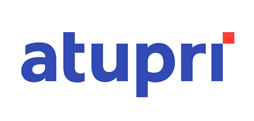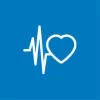Adults over 26 years old and young adults between the ages of 19 and 25 years old can choose between six different deductible models: 300 francs, 500 francs, 1000 francs, 1500 francs, 2000 francs, or 2500 francs.
For children and adolescents under the age of 18, there are seven deductible tiers to choose from: 0 francs, 100 francs, 200 francs, 300 francs, 400 francs, 500 francs, and 600 francs. The lowest deductible you can pay is sometimes called the base deductible.
The base deductible is the only deductible model that all Swiss mandatory health insurance providers are required to offer. So the insurance models you can choose from can vary depending on your insurance provider and your place of residence.
The current system with many different deductible models is often criticized as being overly complicated, and this criticism is not completely unfounded.
Deductibles and co-payments
The insurance deductible is the portion of your medical costs that you must pay out of your own pocket every year. The insurance covers the portion of covered medical expenses which exceeds the deductible. There is also a 10-percent coinsurance payment which applies to all costs that are covered by your health insurance provider. This 10-percent coinsurance payment is limited to a maximum of 700 francs (adults) or 350 francs (children).
So if you, as an adult, choose the highest deductible of 2500 francs, then the maximum possible portion of covered medical expenses that you would have to pay out of your own pocket every year would be 3200 francs. You would reach that threshold if your annual medical expenses are 9500 francs or higher. If you have a 300-franc deductible, the most you would have to pay out of your own pocket in one year would be 1000 francs. But the insurance premiums you have to pay are much higher if you use a 300-franc deductible.
Exception for hospitals: Policyholders over the age of 26 are required to make an additional 15-franc coinsurance payment themselves towards the costs of accommodation and care. This expense does not apply to hospital stays related to maternity.
How the deductible system works
Example: If you have a 2500-franc deductible and your medical bills for one year total 5500 francs, then you would pay 2500 francs of your bills yourself (the insurance deductible). On top of that, you would pay an additional 300 francs (10 percent of the remaining 3000 francs of medical bills) yourself. The insurance company would cover 2700 francs of your 5500 francs of covered medical expenses.
Choosing the right deductible
Choosing the right deductible is complicated by the fact that your deductible has a major impact on the insurance premiums you pay. The higher the deductible you choose, the less you pay for insurance. That makes sense. The more of your medical expenses you are prepared to pay out of your own pocket, the bigger the discount you get from the insurance company.
Example: For managed care health insurance with accident coverage, a certain health insurance company charges adults in a certain region 360.40 francs per month if they choose a 300-franc deductible, and a much lower premium of 232.10 francs per month if they use a 2500-franc deductible.
The difference comes to a whopping 128.30 francs per month or 1539.60 francs per year. In this case, using the 300-franc deductible only pays off if your medical expenses exceed 2011 francs per year. Make sure to also account for the 10-percent coinsurance payment when calculating the break-even point.
Find the right deductible with the unbiased comparison
The mandatory health insurance comparison on moneyland.ch includes a practical tool that automatically calculates the best deductible model for you based on your projected healthcare expenses. The optimal deductible for each policy is shown on the results page. Just select the Optimal Deductible option from the Deductible dropdown when choosing your criteria.
Alternatively, you can also use the health insurance deductible calculator to simultaneously compare different deductible models for different healthcare expenses scenarios and years.
The rule of thumb for choosing the right deductible
There are only two mandatory health insurance deductibles that make sense. If your healthcare costs are high, the lowest deductible is the cheapest option. If your healthcare costs are low, the highest deductible is the cheapest option. This rule applies both to adults and children. All other deductibles are suboptimal, regardless of your healthcare spending.
The following guideline applies for adults (including young adults): On average, the 2500-franc deductible is the most affordable option for people with medical expenses of up to 1900 francs per year.
If your medical expenses are higher than 1900 francs, then using a 300-franc deductible generally makes more financial sense. But depending on your profile, using a 300 deductible can already work out cheaper if your annual healthcare expenses are 900 francs of higher, or work out more expensive for annual medical expenses up to 2012 francs per year.
The best deductible for children
For children, the 600-franc deductible can work out cheaper if their annual medical costs are 400 francs or less. If their healthcare costs are higher than that, then a zero-franc deductible is generally cheaper. But here too, depending on the specific insurance offer used, using a zero-franc deductible may already be cheaper if their healthcare costs are just 150 francs per year.
Which deductibles are most popular in Switzerland
In Switzerland, more than 90 percent of children are insured with the base-deductible (zero francs). Around 47 percent of young adults choose the base deductible (300 francs), followed by the highest deductible of 2500 francs being used by 43 percent.
Among adults, the share of deductibles looks somewhat different: 45 percent (300 francs), 10 percent (500 francs), 3 percent (1000 francs), 5 percent (1500 francs), 2 percent (2000 francs), 36 percent (2500 francs). The share of deductible tiers used varies slightly between insurance models.
How can I change my deductible?
Changing your deductible is easy. You can change your deductible for mandatory health insurance at the end of each year. Just make sure to submit the request to your insurance provider by November 30. The new deductible will take effect on January 1 of the following year.
Important: The highest and lowest deductibles are the only deductible models that make financial sense. All other deductible models result in your paying more than necessary for mandatory health insurance. Using the highest deductible (2500 francs) makes financial sense if your annual medical expenses are no higher than 1900 francs.
More information:
Health insurance deductible calculator
Compare Swiss mandatory health insurance offers now
How can I terminate my Swiss mandatory health insurance

 Deal of the Day
Deal of the Day 











